Precursors of today's modern museums, cabinets of arts and curios (Kunst- und Wunderkammer) appeared among the nobility in the 16th century. They were followed later by collections of curios among the rising middle-class. The intention was to depict and record the universe and the order of things.
Made by human hand (artificialia), produced by nature (naturalia), from faraway lands (exotica) and scientific instruments (scientifica) – these were the four classification categories in which the cabinets of arts and curios were usually filled. They covered everything that was useful for the purpose of understanding the world.
Their collections included minerals, preserved animals, seashells and snails' shells, antlers, ivory, amber and boxwood carvings, turning work, examples of goldsmith's and silversmith's art, combinations of abnormal, bizarre or particularly flawlessly formed natural growths (e.g. corals, tortoise shell, mother-of-pearl, antlers, coconuts, ostrich eggs etc.) with bases or mounts. But they also covered scientific measuring instruments, automata, products of glass art, initially also books. In a nutshell, everything that was rare or curious was a candidate, all the things which people in those days found unique, odd or fascinating. The prime objective was the acquisition of knowledge, but the pleasure involved in collecting, owning, inspecting and presenting these treasures also played an immense role.
Furniture for the presentation of the specimens, so-called curiosity cabinets (Kunstschränke), played an important role in the ordering system of the Kunst- und Wunderkammer. The items were juxtaposed in them according to specific principles and arranged in front carefully selected backgrounds. Ultimately, in the late 19th century, the era of the Kunst- und Wunderkammer drew to an end with the establishment of special museums (houses for natural history, art etc.).
Aachen's extensive and diverse museum treasures are the product of a rising self-awareness of the upper-middle-class in the late imperial era and of the passion for collecting among entrepreneurs who had come into great wealth during the industrial revolution. The foundation of the museum association in 1877 and the establishment of the Suermondt Museum in 1883 afforded Aachen's inhabitants access to erudition and appreciation of the arts. Learning through observation, the museum as a place of education – as Samuel Quiccheberg so aptly put it in his theoretical treatise on museums. Replicas and copies were exhibited on a par with originals; the objective was to offer as comprehensive an overview as possible of the artistic expressions of all times and all corners of the world.
Many donations and bequests to the museum came from members of the museum association, which comprised leading figures of civic society from the realms of politics, economy and public service, the educated middle-class and generally the core of Aachen's community. Illustrious foreign collectors enjoyed the cosmopolitan atmosphere of the city in the period before the First World War, like Count Gregor Stroganov and Minister Alexander Svenigorodskoi, for example, who loaned numerous works but also made many donations to the recently established museum. The various sub-collections are essentially an expression of the particular artistic preferences and collector's zeal of individual persons.
The museum's rich arts and crafts collection – having languishing for decades in a storage cellar – was resurrected for the creation of the Civic Cabinet of Arts and Curios, an exhibition which, since 2016, has been offering visitors the opportunity to explore and discover, and literally to marvel and wonder. It features typical Wunderkammer objects, for example the magnificent so-called "Lobkowitzscher Kaiserpokal" crafted by the Prague court goldsmith Hanns Reinhardt Taravell (circa 1650, loan from the Ludwig Foundation), miners' table decorations in the form of pieces of ore mounted with filigree silverwork and gilded copper montages from the 18th century, finely carved wooden cases for pipes from the Dutch Baroque period, a tobacco box fashioned from a tortoise shell with a silver lid, an ivory beggar pair with glass eyes and boxwood clothes by Simon Troger (1693/94-1768), utensils from the 16th - 18th century with handles fashioned from a variety of materials (coral, amber, agate, ivory etc.), reverse glass paintings from the 18th century that were made in China for the European market, an extremely rare wrought-iron dog muzzle from the time around 1500, an Alpine miniature ossuary with skulls carved from bone (early 19th century), a small dice carved in the form of a naked woman from the 17th century, wooden checkerboard pieces from the early Renaissance with carved portrait reliefs, a wooden deer's head with real antlers (18th century), an Egyptian mummy with a painted sarcophagus, African weapons, Japanese blade guards, furniture, and a French canteen from the 18th century made from a gourd with engraved scenes of two distinctly different theatres of war: soldiers shooting; and a pair of lovers…
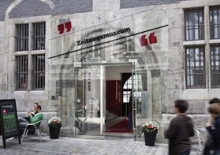
Medienmuseum, Wechselausstellungen und eine Sammlung von 200.000 Zeitungen und Druckwerken in nahezu allen Sprachen.
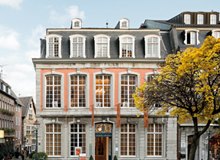
Das bekannteste Wohnzimmer Aachens, mit anschaulichen Einblicken in die Wohnkultur des 18. und frühen 19. Jahrhunderts.

UNESCO-Weltkulturerbe mit herausragender künstlerischer Ausstattung: Karlsschrein, aufwändigen Mosaiken, einer goldenen Altartafel.
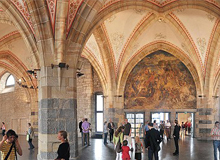
Die größten Historienbilder der Romantik, originalgetreue Kopien des Säbels Karls des Großen, einer karolingischen Handschrift, der Reichskrone.
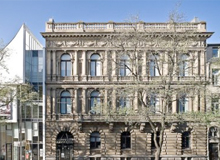
Kunst von der Gegenwart bis in die Antike, mit hervorragenden Gemälden und Skulpturen des Spätmittelalters sowie der Malerei des 17. Jhs.
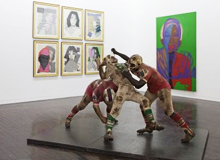
Schauplatz für zeitgenössische Künstler und Kunstwerke, Begegnungsstätte darstellender und bildender Kunst, Bestände der Sammlung Ludwig.
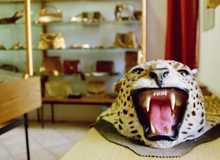
Lebendiges Zentrum zur Erinnerung der Grenzgeschichte und -geschichten, mit verbotenen Souvenirs und Schwarzbrennerei.
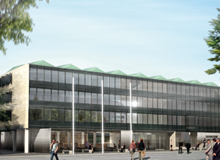
Eröffnung 2014 – Lebendige Geschichte von den Karolingern bis heute. Ausgangspunkt der Route Charlemagne am historischen Katschhof.

Stolz blicken die Aachener auf ihre Geschichte als römische Bäderstadt und Kaiserresidenz Karls des Großen zurück. Der Dom, 1978 zum ersten UNESCO Weltkulturerbe in Deutschland ernannt, und das Rathaus bilden den Mittelpunkt der Stadt. In den Gassen der Altstadt erzählen viele historische Gebäude von der lebhaften Geschichte der Stadt, und doch ist die Zeit nicht stehen geblieben.
An der „Eliteuni“ RWTH Aachen und den anderen Hochschulen sind rund 40.000 Studenten eingeschrieben. Das junge Leben pulsiert vor allem im Pontviertel, dem beliebten Ausgehviertel mit seinen zahlreichen Cafés, Kneipen und Restaurants. Doch auch in den Gassen und auf den Plätzen der Altstadt ist immer viel los. Rund um Dom und Rathaus laden zahlreiche Einzelhändler ebenso wie Filialen namhafter Häuser zum Bummeln ein.
Quelle allen Ruhms ist das Wasser: Die Heilkraft der heißen Thermalquellen war ausschlaggebend dafür, dass Kaiser Karl Aachen zu seiner Lieblingsresidenz machte. Die Badetradition wird heute durch die Carolus Thermen Bad Aachen weitergeführt.
Wer sich lieber in der Natur entspannt, hat dafür zahlreiche Möglichkeiten, etwa im nahe gelegenen Nationalpark Eifel. Zudem locken mehrere Theater und Museen mit einem vielschichtigen Angebot.

